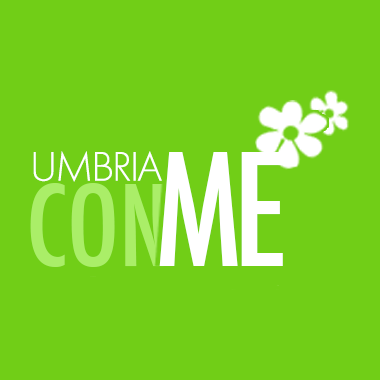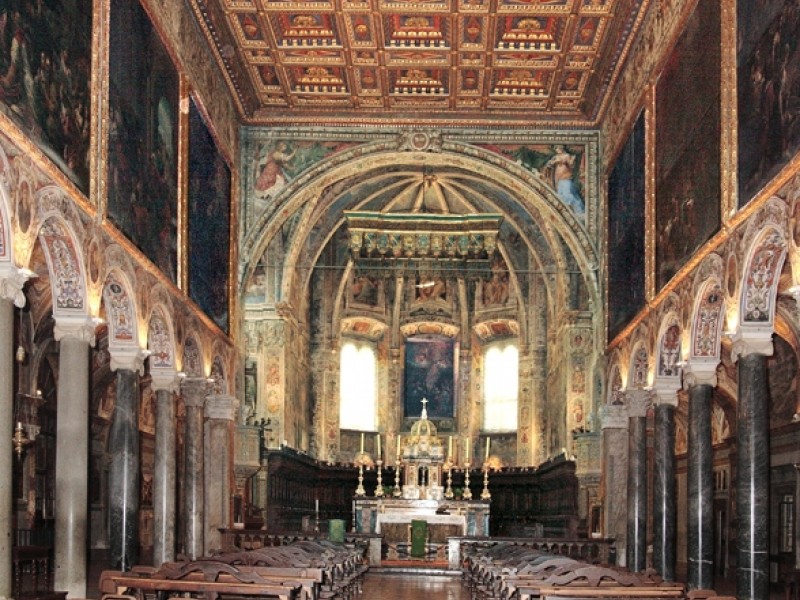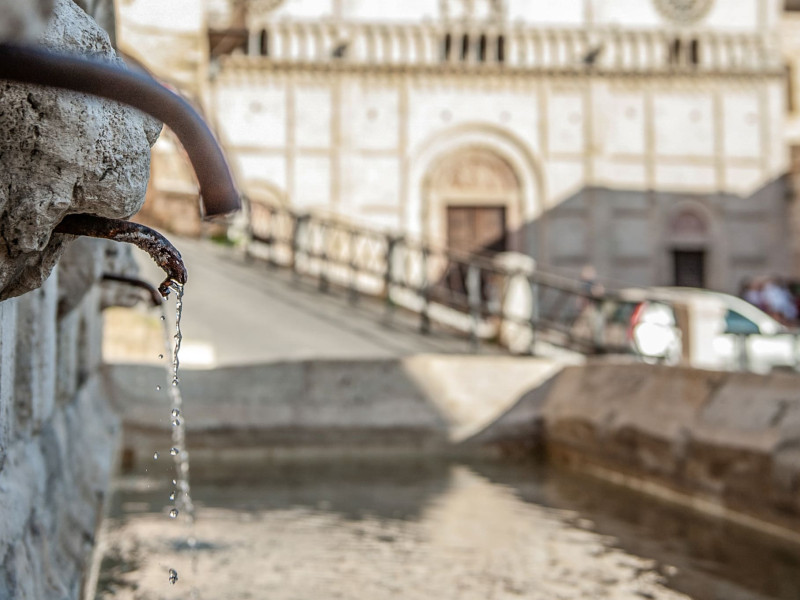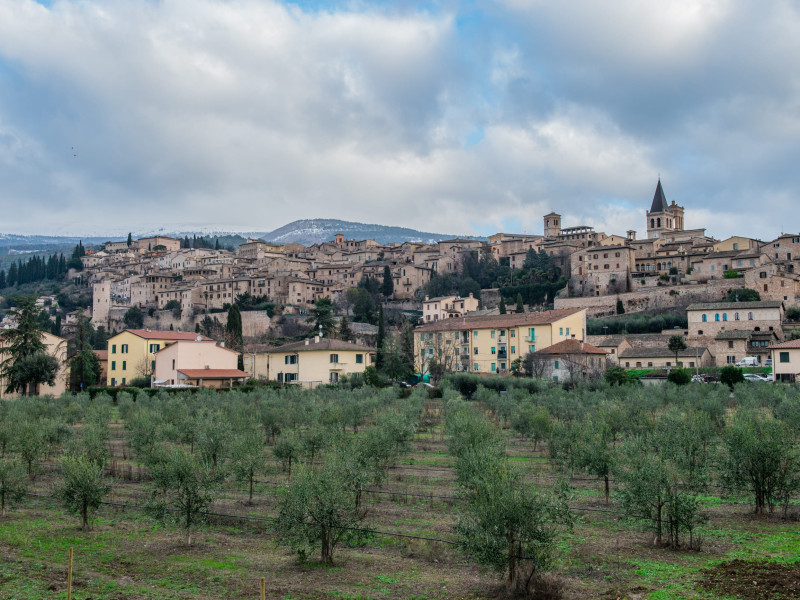Perugia - The Abbey of Saint Peter
The Abbey of San Pietro has preserved its original architecture, with numerous structural works having taken place between the 15th and 17th centuries.
To enter the church you have to cross a beautiful courtyard surrounded on all four sides by a portico with travertine columns topped with Doric capitals, produced in 1614 by Valentino Martelli, which completely covered the church facade. The mighty bell tower, which is dodecagonal until it reaches line of corbels, then becomes hexagonal with high mullioned windows and ends with a slender spire. Designed by Bernardo Rossellino, the lower half was built in the 13th century and the top half was built in the 15th century.
The entrance to the church is characterised by a rich 16th century portal made from white marble topped with a lunette on which there is a fresco depicting the Madonna e due angeli by Giannicola di Paolo. Next to the portal are some frescoes by the artist which have been brought back to life, ones which belonged to the original facade.
The interior presents a unique fusion of medieval architecture and decorative late mannerist work.
The church has a basilica-style layout with three naves divided by columns with Ionic capitals of the late imperial period, and in its nave it has large paintings depicting scenes from the Old and New Testament written by l'Aliense (1592-94), which are framed in a fresco decoration that creates space between the paintings, arches and underarches, and continues even in the aisles. The altar consists of columns, pillars, recesses and domes made from rare polychrome marbles.
The right nave depicts characters linked to the church such as San Pietro in Vincioli, San Benedetto, Santa Scolastica, San Mauro and San Gregorio Magno.
Along the wall are also the Cappella di San Giuseppe chapel, decorated in 1855 by Domenico Bruschi, and the Capella delle Reliquie chapel, with a wrought iron gate and 16th century stucco and frescoes by Benedetto Bandiera. On either side of the entrance to the presbytery are two paintings by Giovanni Domenico Cerrini (Mary nursing the Child and Saint John the Baptist). Inside the presbytery are the wooden choir stalls (dating from 1525-1535), which are among the most beautiful in Italy.
The sacristy, built in 1451, is home to frescoes on its ceiling; it has The Old Testament Stories, which is perhaps by a Flemish master, while on the walls is Stories from the Lives of Saints Peter and Paul by Vincenzo Danti, a Michelangelo style artist, and 5 small paintings by Perugino with images of saints for the Feast of Ascension, requisitioned by the French and today in Lyon.
Along the walls of the left nave are notable works such as Pietà, part of the broken altarpiece for Sant'Agostino from the church of Sant'Agostino by Pietro Perugino. In the Vibi chapel notable works include the marble Dossale of the Young Jesus, the Baptist, and Saint Girolamo attributed to Mino da Fiesole (dating from 1453), Annunciation by Giovan Battista Caporali and Visitation by Stefano Cimurri (dating from 1530). Next is the Ranieri chapel with a ceiling decorated with paintings by Annibale Brugnoli (XIX) over a work by Caporali. The Sacramento chapel has instead a ceiling decorated by Francesco Appiani and Pietro Carattoli. On the altar is a picture of the Madonna of Giglio from the 14th century in the centre of a painting depicting Saints Peter and Paul by Jean Baptiste Wicar (19th century).
On the opposite wall is a large painting from the end of the 16th century with the Triumpth of the Benedictine Order.
Upon leaving the church, pasing through the first cloister, which has already been mentioned, take the corridor leading to the second cloister set on three floors with a well in the centre. Still ahead is the old refectory with a sink in glazed terracotta depicting the Samaritan at the well work from the 15th century by Benedetto Buglione. A third cloister also known as ‘cloister of the stars' is the work of Galeazzo Alessi.
from: www.umbriatourism.it




Share